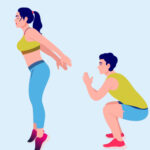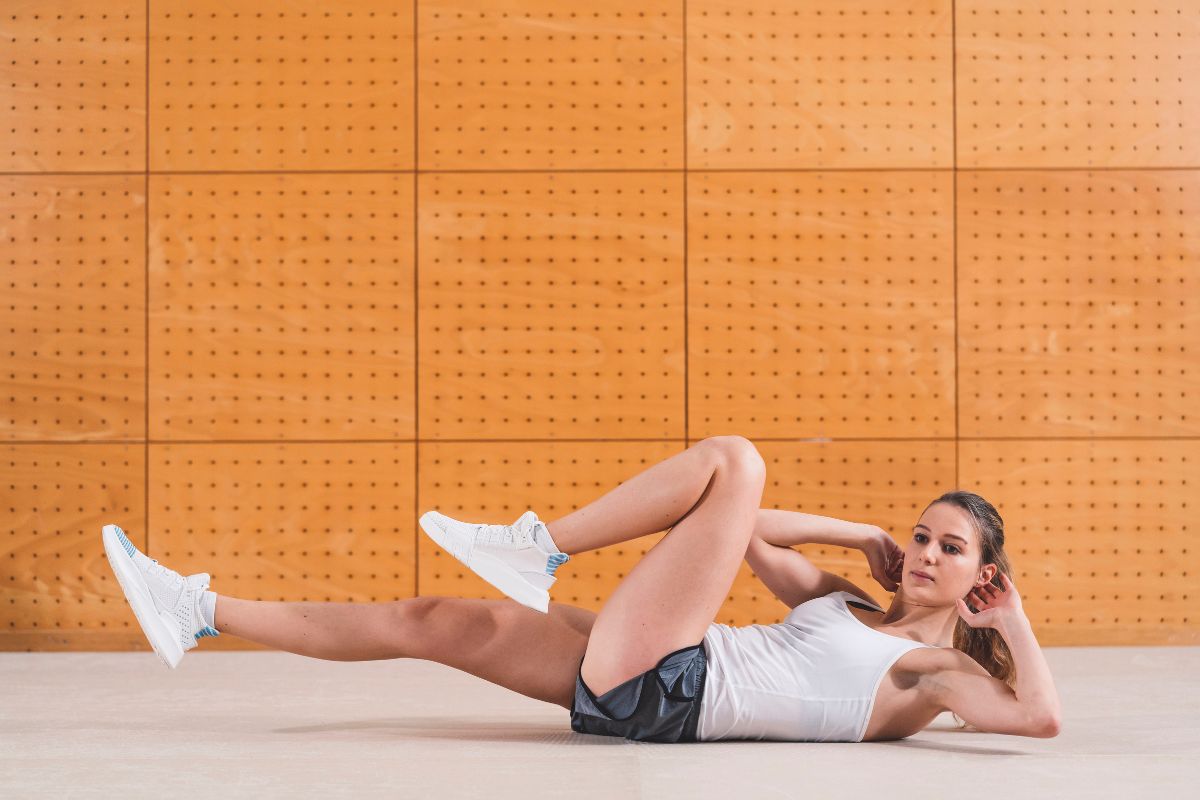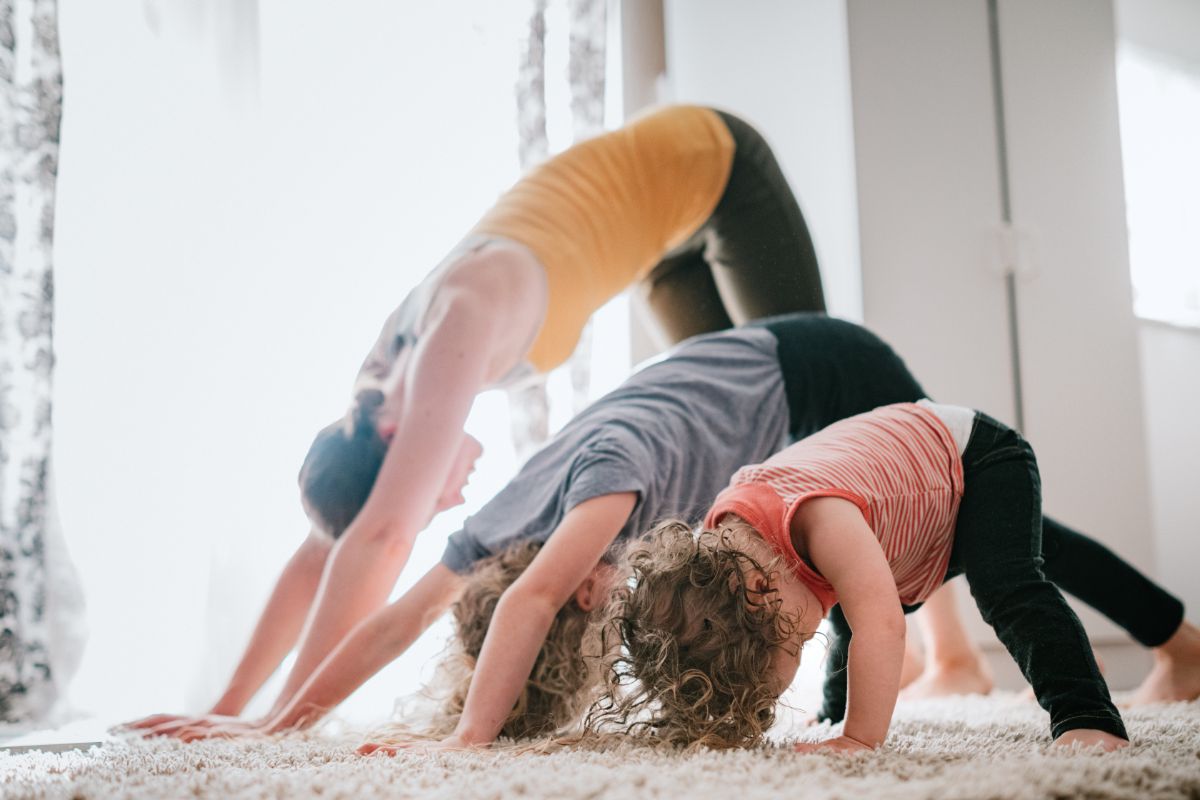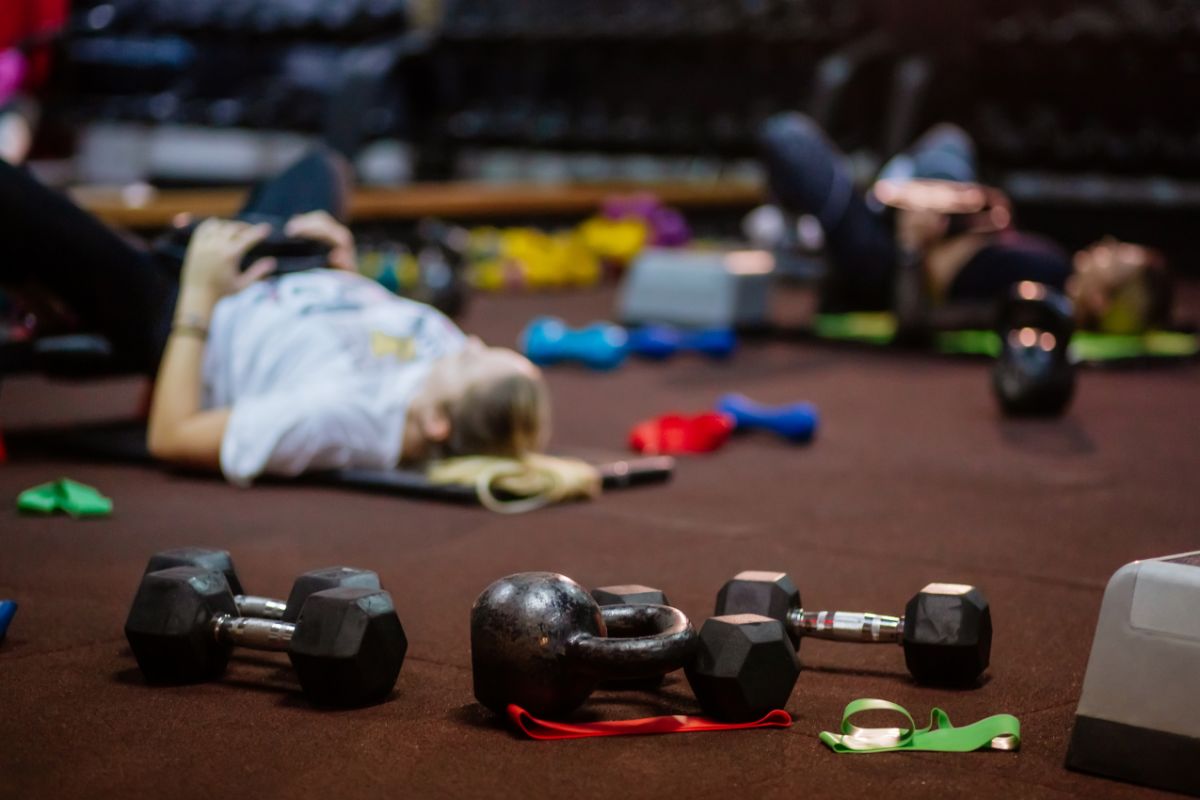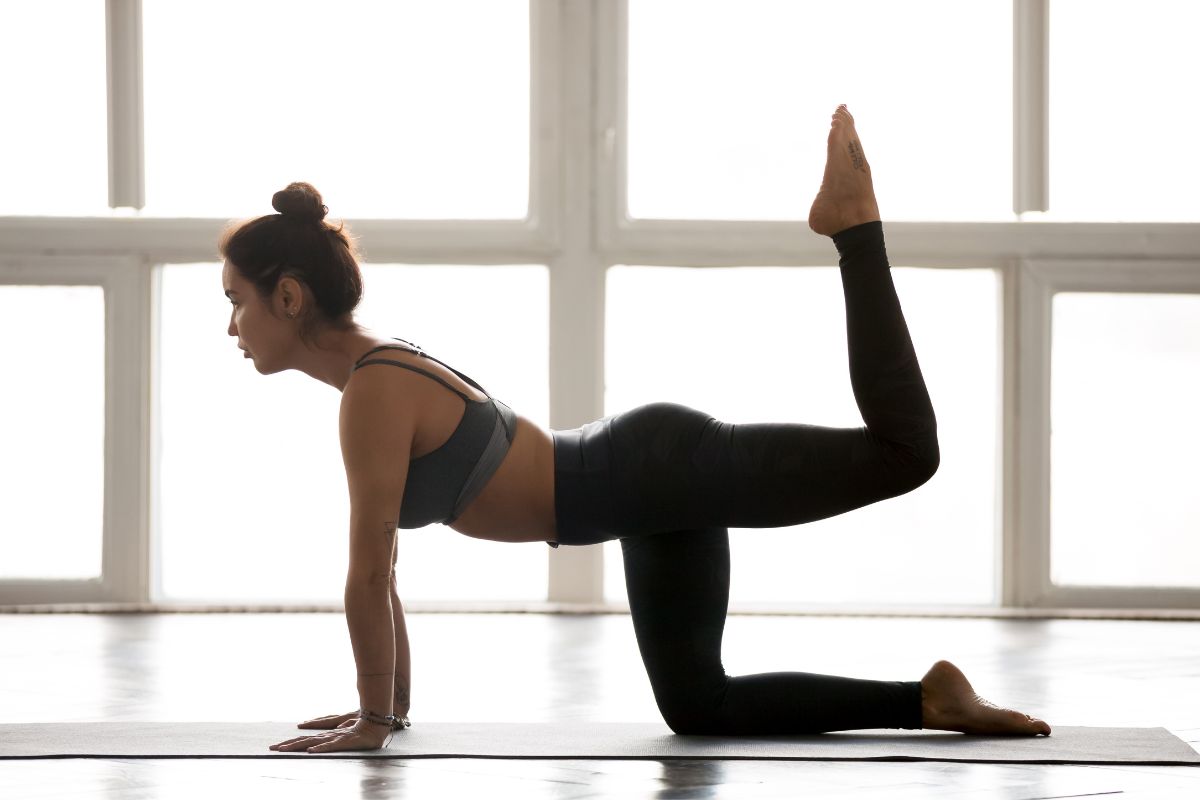Last Updated on November 20, 2022 by TJ Daniels, Certified Personal Trainer
It’s not uncommon first thing in the morning to feel rigid and a little tight. When you sleep, your heart rate slows down and your blood flow to your muscles is not the same.
When you don’t have oxygen rich blood flow to your muscles they will stiffen up, so it’s important to get up slowly and patiently work yourself into your day.
As well, working out can be intense and require stretching, but we must keep our commitment to exercise as it’s a great way to stay in shape and live a long and healthy life.
A great way to get this process started, relieve tension, and increase your flexibility is through stretching. Stretching helps you feel more limber and also aids in preventing wear and tear on the joints.
Why Should We Care About Stretching?
Physical activity, and specifically any type of weight training, has the effect of shortening muscles and making them less flexible.
By being more flexible, you’re less likely to strain or sprain something because your range of motion is greater and you won’t overextend and cause an injury.
What many don’t know is that when you stretch your muscles, you are also stretching your joints.
And joints are the structure that links to bones, so although you can’t stretch your bones, you can stretch your muscles and your joints which will give you the greatest amount of flexibility.
Additionally, if you want to develop and maintain optimal fitness you need to be sure stretching is included in your daily routine. Stretching is not only critical to athletic performance, but overall health.
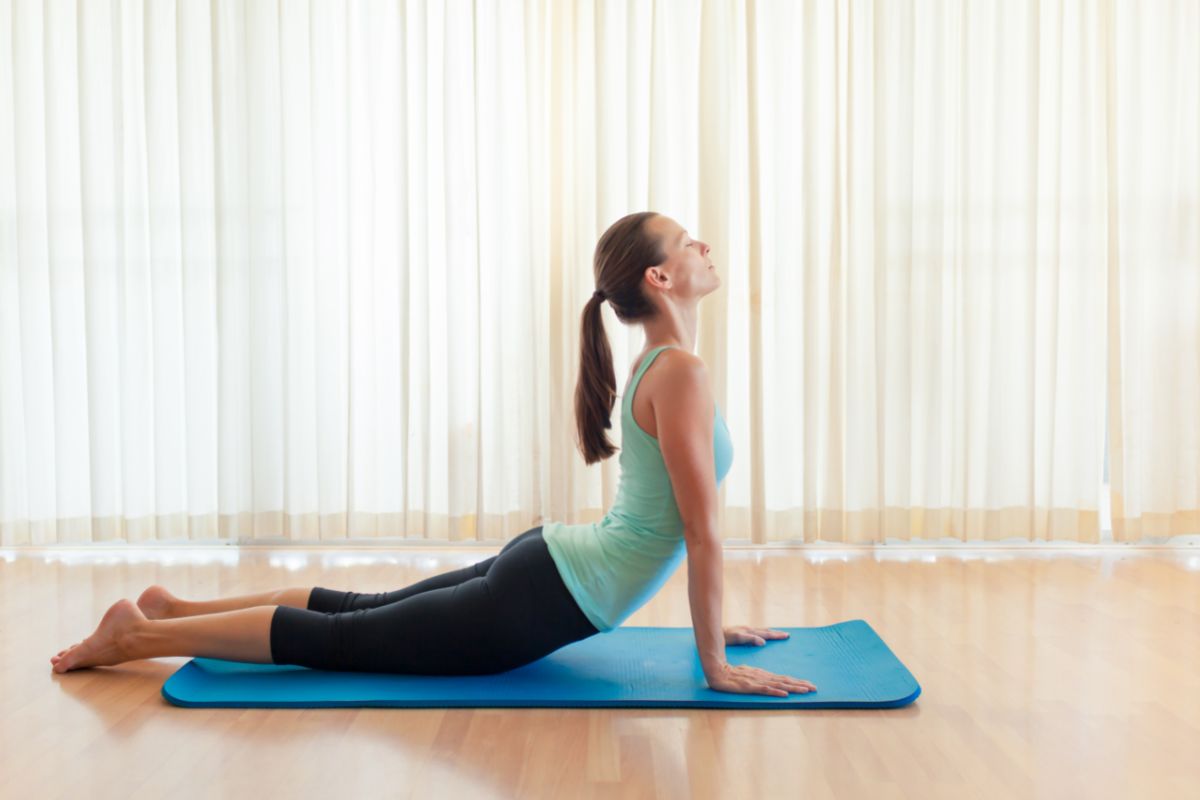

One of the most important pre and sometimes post-workout things to do is to stretch. Specifically, stretching the muscles we plan to use.
But what is it about the simple act of stretching that gives us such pleasure after a workout routine or other physical activity?
Why does stretching feel so good? That is what we are here today to find out.
The Benefits Of Stretching
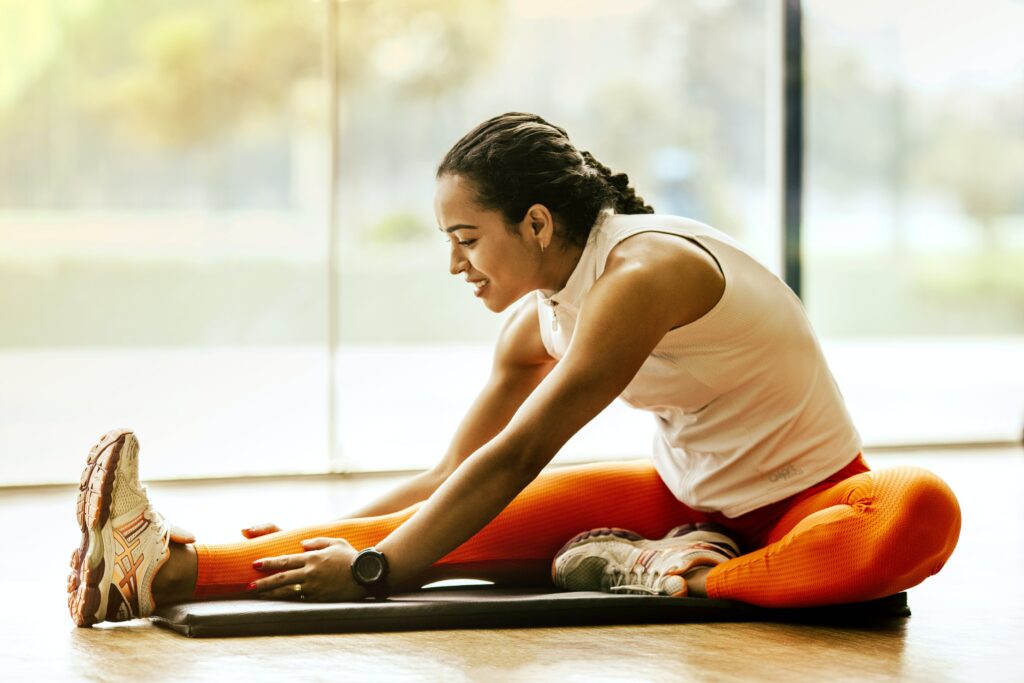

There are actually quite a few benefits to stretching your muscles, most of which come from the effect that stretching has on many parts of your body.
You see, muscles are essentially compact springs made of tissue and fluids.
By stretching, you open up pathways to other organs and tissues in the body, making it easier for the body to do things as a whole.
Some Other Benefits of Stretching Include:
• Allows joints to move through their full range of motion
• Reduce likelihood of injury
• Increase blood flow, blood pressure, and blood circulation
• Increase range of motion
• Reduce muscle tension and muscle soreness
• Improve athletic performance
• Release endorphins (chemicals produced naturally by the nervous system that promote pleasure and improve a sense of well-being)
• Relieve stress and improve mental health
• Promote better posture
• Less pain during daily tasks and everyday life


When Should You Stretch?
You should stretch at least three times per week, but preferably more, and also before and after all athletic commitments.
Stretching helps you on multiple fronts and is really an easy thing to coordinate. When you feel like stretching, you should!
Think about all of the times when you realize you have been sedentary for a length of time and suddenly take notice of your body and that you are feeling uncomfortable tightness.
These times, and every time like it, are a great time to stretch!
Basically, it would be really difficult to stretch too much. So, as you have heard before, “Just Do It”.
However, make sure you are doing some sort of dynamic movements prior to stretching, like swinging your arms or jogging in place, prior to stretching.
If you are stretching at the end of a workout or exercising, warming your muscles up through dynamic movements would not be necessary since your muscles are already loose.
Types Of Stretching
There are two main types of stretching: Dynamic and Static.
Dynamic stretches are stretches that involve movement.
Static stretches are fixed-style moves that put the muscles and joints into a position for a fixed length of time and hold it, typically 45-90 seconds.
In the next section, we will dig deeper into each.


What Are Dynamic Stretches?
As we mentioned above, dynamic stretches are stretches during ‘movement’ and help with promoting reduced muscle tension.
Dynamic stretches are most effective at the beginning of your routine or athletic activity.
Dynamic stretching should resemble the activity that you are about to partake in, or you can keep it very general in nature if you are just doing general stretching.
For example, if you were getting prepared to run for a few miles, you should do some hamstring and quad movement style stretches.
Or, if you were just stretching for general wellness and flexibility, you could do some arm circles and standing leg raises.
The purpose of these types of stretches is to increase your muscle temperature and other soft tissues for whatever you are getting ready for.
Understanding that could be a competitive athletic event or just a stroll around the block. Regardless, you need to address those tight muscles and get prepared for your next endeavor.
Dynamic stretches include:
- Walking lunges
- Small hip circles
- Torso twists
- Leg swings


What Are Static Stretches?
As discussed, static stretching places a muscle or muscle group in a position where it can be extended (or stretched) for a fixed amount of time.
Static stretching involves moving the muscle to the full extent of its range of motion and has been known to relieve muscle tension.
Static stretching increases flexibility and decreases the risk of injury and should be performed after a workout or activity or again, just part of your normal regular stretching regime.
The reason why you should implement this type of stretching at the end of your workout or activity is because these types of stretches can inhibit your muscles’ ability to react swiftly.
Static stretching should be performed with a slow lean into the stretch, paying attention to the sensations that your muscle groups are sending.
You should feel a good stretch but it should not be painful. The best approach is to “listen to your body”, and go as far as you can without your body telling you to stop.
Static stretches include:
- Shoulder stretch
- Hamstring stretch
- Quadriceps stretch
- Calf stretch
Let’s Dig Into A Few Of The Benefits!
Improvements In Circulation


Stretching has been shown to get your blood flowing, which is a great benefit of the practice. Proper circulation is key for maintaining optimal health.
It ensures that blood and oxygen are properly flowing throughout the body which is crucial for your organs. Proper circulation as assists with keeping your brain sharp and the healing of wounds, so its benefits are beyond just your heart.
The areas where veins and arteries move through are fairly compact with tissue and muscle. By stretching, these areas are loosened, and blood vessels are relaxed.
This can increase the amount of blood flow around your body and makes it easier for your heart to be able to pump blood around the body.
Over time, this improves your overall circulatory health and lower blood pressure.
Improvements In Flexibility
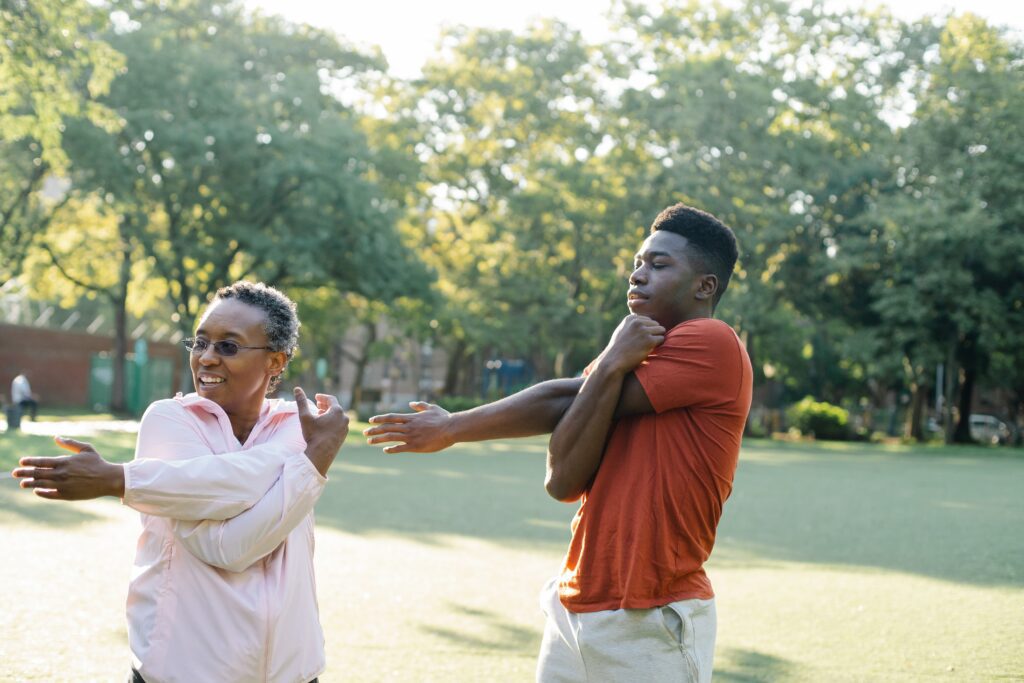

Stretching can improve your flexibility, which is important so your muscles stay lengthened which will help prevent injury and decrease soreness after a workout.
As stated before, your muscles are basically a spring of tissue that fills with fluid when they need to do something.
However, the bigger or less used they are, the tighter and more compact the muscle is.
This is great for bodybuilders, who can get a lot of raw potential power out of their muscles, but it also makes them somewhat inflexible.
By stretching, you are encouraging your muscles to move easily, no matter the direction.
Stretching also helps slow down the deterioration of muscles, as they are practiced more frequently.
Improvements In Posture


Our sedentary lifestyles mean that we are frequently static and in the same position for long periods, sometimes hours at a time.
This static nature takes a toll on our body and makes it more prone to aches and pains throughout it.
With stretching, you don’t need to worry about that, as it helps your body move out of the position it is regularly in.
It helps the body realign itself to a more natural position and halts the process where you end up with a permanently bad posture. This will stop those aches and pains easily.
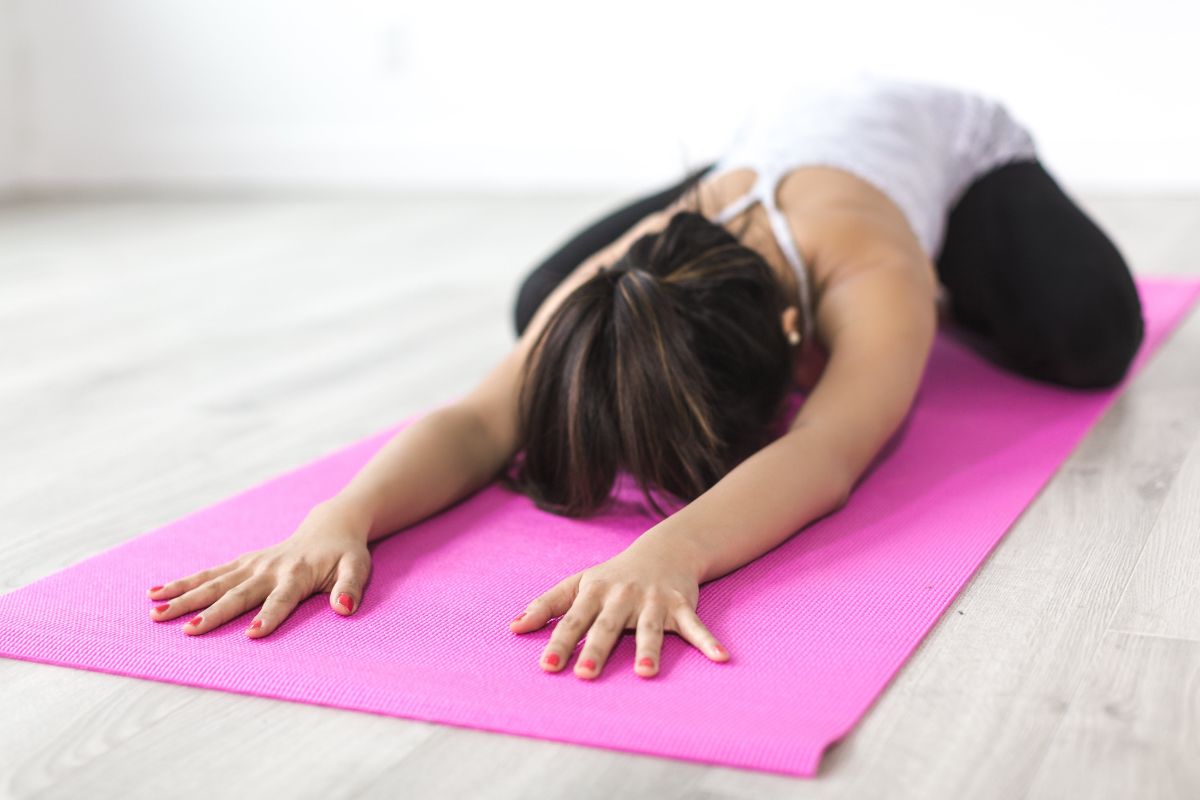

Circulation Improvements
Yes, we know, we spoke about improved circulation earlier. But none of us survive without it!
And who doesn’t want better circulation?
As well, the reasons above are for more long-term benefits, the reasons here are the immediate benefits to the body.
For starters, improved circulation means quicker transit of oxygen around the body.
Your muscles, organs, tissues, and brain will all receive oxygen much quicker thanks to improved circulation.
This will make you feel less sluggish, more alert, and more energetic in the short term.


Nervous System Improves
When you stretch, you stretch anything that you’ve extended. The majority of this is muscle, but in your body, there are a lot of nerves.
Nerves control the coordination of actions and sensory information. By stretching, you activate the parasympathetic nervous system response.
This nervous system response is responsible for your rest and digestive functions, rather than active and movement functions.
This in turn can leave you feeling calm and relaxed and put you into a peaceful state of mind.


Endorphins
Here is the most prominent reason you feel good after stretching. Stretching releases endorphins.
Endorphins are basically chemicals that act as your body’s reward system and are released to make you feel good.
When you have food, endorphins will be released to encourage you to keep eating. When you exercise, your body will release endorphins to keep going.
When you do anything you enjoy doing, your body will release endorphins to encourage this.
Some of these activities would probably be pretty boring if your body didn’t release these chemicals to make them pleasurable.
When we stretch our bodies will release endorphins to encourage this, which flat out feels good and is the main reason we get so much enjoyment out of stretching!


Are There Any Downsides To Stretching?
There are no real downsides to stretching itself, if it is done right. However, if you overstretch yourself, then you may injure yourself.
Just like there is such a thing as too much exercise, there is such a thing as overstretching, and you should be careful with how you do it.
To do it properly, make sure you follow these tips:
First, warm-up. If you are cold, your muscles are cold and fluidless. Without fluids pumping through them, they are liable to strain when you put them into a stretch.
Therefore, go for a 5-minute walk or jog before stretching to avoid this. Then, when you do stretch, stretch your muscles gently.
If you feel them being pushed a little hard, dial it back. You should only stretch as much as your body can manage.
Also, stretch both sides equally. If one side stretches more easily than the other, it puts pressure on the less able side and could lead to an injury.
Finally, make stretching an everyday routine. It will help your body adapt and make it easier to stretch in the future.


Conclusion
Stretching feels good because it is good for us and our body recognizes that. Not only does it improve poor posture but it also has other pain relieving effects.
Stretching should be a part of an exercise program and has been proven to promote relaxation.
We need to make sure we are committed to a stretching routine, meaning we get endorphins released to encourage more stretching.
If you want to start stretching, start slow and gentle. Stretching is a very forgiving exercise if you don’t put too much pressure on yourself.
If you are still unsure about potential injury from stretching based on your circumstances, you should consider visiting a physical therapist for recommendations.
Hopefully, you have an understanding from this article of why you should stretch and why stretching feels good!
If you’re like me, you can’t wait to promote your endorphin release and resulting pleasant feeling to not only assist your central nervous system but also increase your blood flow and help prevent injuries.
So, let’s go do some stretches!
- How To Start HIIT Workouts [Beginner’s Guide] - May 18, 2023
- How To Sneak A Workout In While Taking Care Of Your Baby - March 17, 2023
- How To Build Your Chest With Dumbbells [Guide] - February 9, 2023

